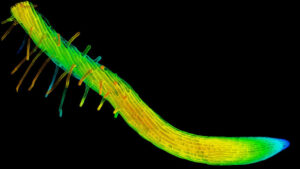
As brain tumors develop, they exhibit two primary growth patterns: exerting mechanical force by pushing against the brain or extending finger-like projections to infiltrate and destroy surrounding tissue. Recent research has highlighted that tumors exerting mechanical force tend to cause more significant neurological dysfunction than those that invade tissue. But what deeper insights can these growth tactics provide about patient care?
A collaborative team from the University of Notre Dame, Harvard Medical School/Massachusetts General Hospital, and Boston University has pioneered a method to measure a brain tumor’s mechanical force, alongside a model to estimate brain tissue loss in patients. Their findings, published in Clinical Cancer Research, could potentially transform surgical practices and patient management strategies.
Innovative Techniques in Tumor Measurement
During brain tumor surgeries, neurosurgeons typically send a tumor slice to a pathologist for immediate analysis to determine its type. This classification is crucial as primary brain tumors, like glioblastoma, require different treatments compared to metastatic tumors from organs such as the lung or breast. According to Meenal Datta, assistant professor at Notre Dame and co-lead author of the study, “By adding a two-minute step to a surgeon’s procedure, we were able to distinguish between a glioblastoma tumor versus a metastatic tumor based on mechanical force alone.”
Datta and her team gathered data from 30 patients using preoperative MRIs and craniotomies, employing Brainlab neuronavigation technology. This technology, widely available in neurological procedures, offers real-time, 3D visualization during surgeries. It allows surgeons to measure brain swelling caused by tumors’ mechanical forces before resection.
Understanding Tumor Dynamics
The research aimed to determine whether brain tissue displacement was due to a tumor’s mechanical force or tissue replacement. The study revealed that significant mechanical force leads to more pronounced swelling, whereas tissue invasion results in less swelling. The researchers developed computational models using a point system of measurements and biomechanical modeling, enabling doctors to assess brain bulge, quantify the tumor’s mechanical force, and calculate tissue loss.
Funded by the National Institutes of Health and other foundations, this study is among the first to demonstrate how mechanical properties can differentiate tumor types. “Knowing the mechanical force of a tumor can be useful to a clinician because it could inform patient strategies to alleviate symptoms,” Datta explained. She noted that commonly used medications, such as steroids and antipsychotic agents, might be employed to counteract neurological effects.
Implications for Treatment and Beyond
To further explore mechanical force implications, the team used animal models of three brain tumors: breast cancer metastasis, glioblastoma, and childhood ependymoma. In the breast cancer metastasis model, they observed that mechanical force reduction preceded visible tumor size changes in response to chemotherapy.
“In this model, we showed that mechanical force is a more sensitive readout of chemotherapy response than tumor size,” Datta stated. “Mechanics are sort of disease-agnostic in that they can matter regardless of what tumor you are looking at.”
Datta hopes the study’s patient models will advance understanding of how mechanical force can enhance patient care management. The research team included co-lead authors Hadi T. Nia, Ashwin S. Kumar, and Saeed Siri, with contributions from various experts at Massachusetts General Hospital and Harvard Medical School.
Future Directions and Broader Impact
Datta’s affiliations with several Notre Dame institutes and her role as a faculty adviser underscore the interdisciplinary nature of this research. She is optimistic about the potential for these findings to influence future treatment protocols and improve outcomes for patients with brain tumors.
The study’s insights into tumor mechanics could pave the way for new diagnostic and therapeutic strategies, potentially benefiting a wide range of cancer patients. As the medical community continues to explore these groundbreaking findings, the hope is that they will lead to more personalized and effective patient care strategies.






